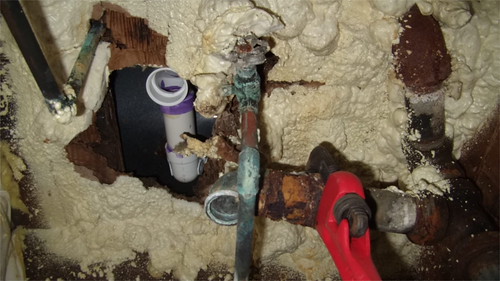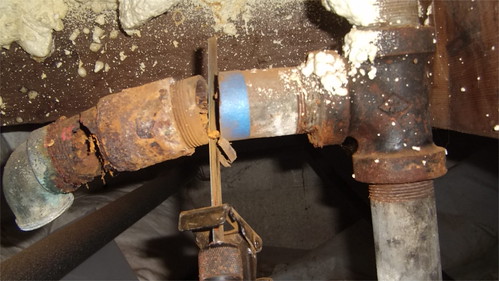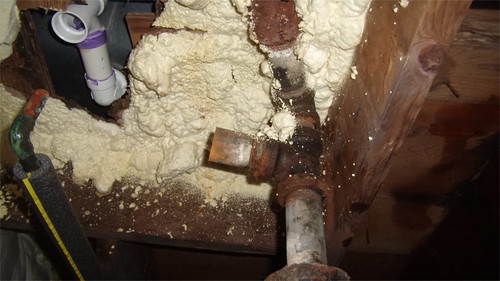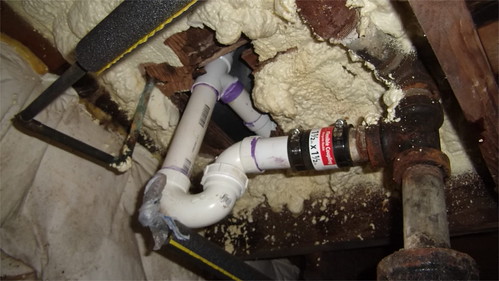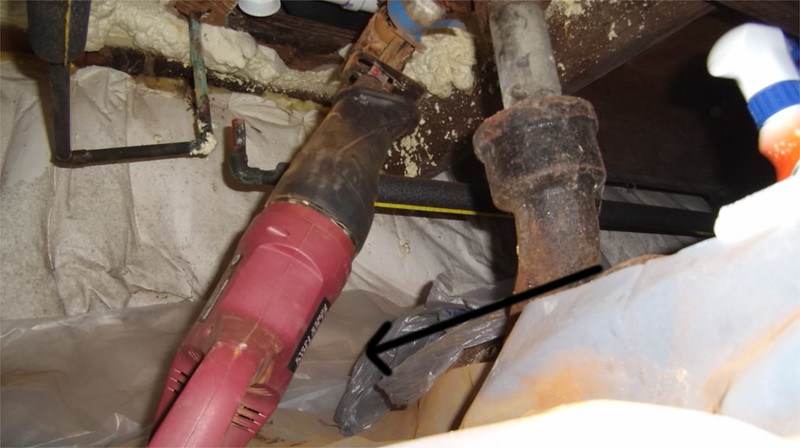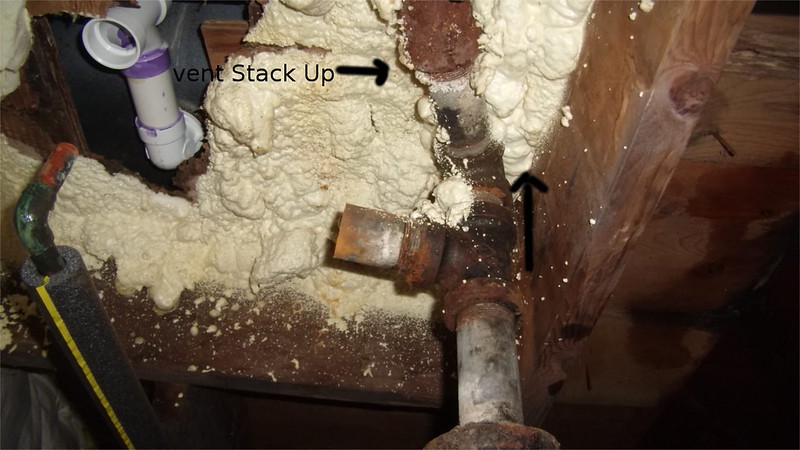Hello Folks,
I have an old cast irn sewer line under the house, some portions of it are galvanized metal though. There is a main bathroom for the house whose bathtub p-trap (as seen from the crawlspace) has collapsed and cracked open, as shown below:
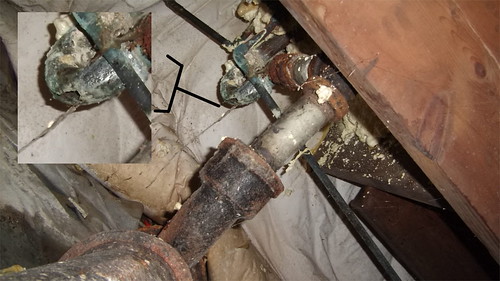
I have known about the issue for some time now, but I have postponed addressing it due to the fact that the going through the crawlspace a dreadful experience for me. Since it is contaminted with sewer and other stuff, I will lay down a new plastic there and use a body vest+respirator.
Any ideas on how to to approaching cutting the cast iron (reciprocating saw with special blade?) and going about fixing the whole thing (I wish it was PVC, life [specially under the crawspace conditions] is so much easier with PVC's cut+coupling+fitting then prime+glue approach.
Another option would be to do it from above, but I would have to remove the bathtub and then destroy the bathbut surroundings along the process.
I have an old cast irn sewer line under the house, some portions of it are galvanized metal though. There is a main bathroom for the house whose bathtub p-trap (as seen from the crawlspace) has collapsed and cracked open, as shown below:

I have known about the issue for some time now, but I have postponed addressing it due to the fact that the going through the crawlspace a dreadful experience for me. Since it is contaminted with sewer and other stuff, I will lay down a new plastic there and use a body vest+respirator.
Any ideas on how to to approaching cutting the cast iron (reciprocating saw with special blade?) and going about fixing the whole thing (I wish it was PVC, life [specially under the crawspace conditions] is so much easier with PVC's cut+coupling+fitting then prime+glue approach.
Another option would be to do it from above, but I would have to remove the bathtub and then destroy the bathbut surroundings along the process.
Last edited:





